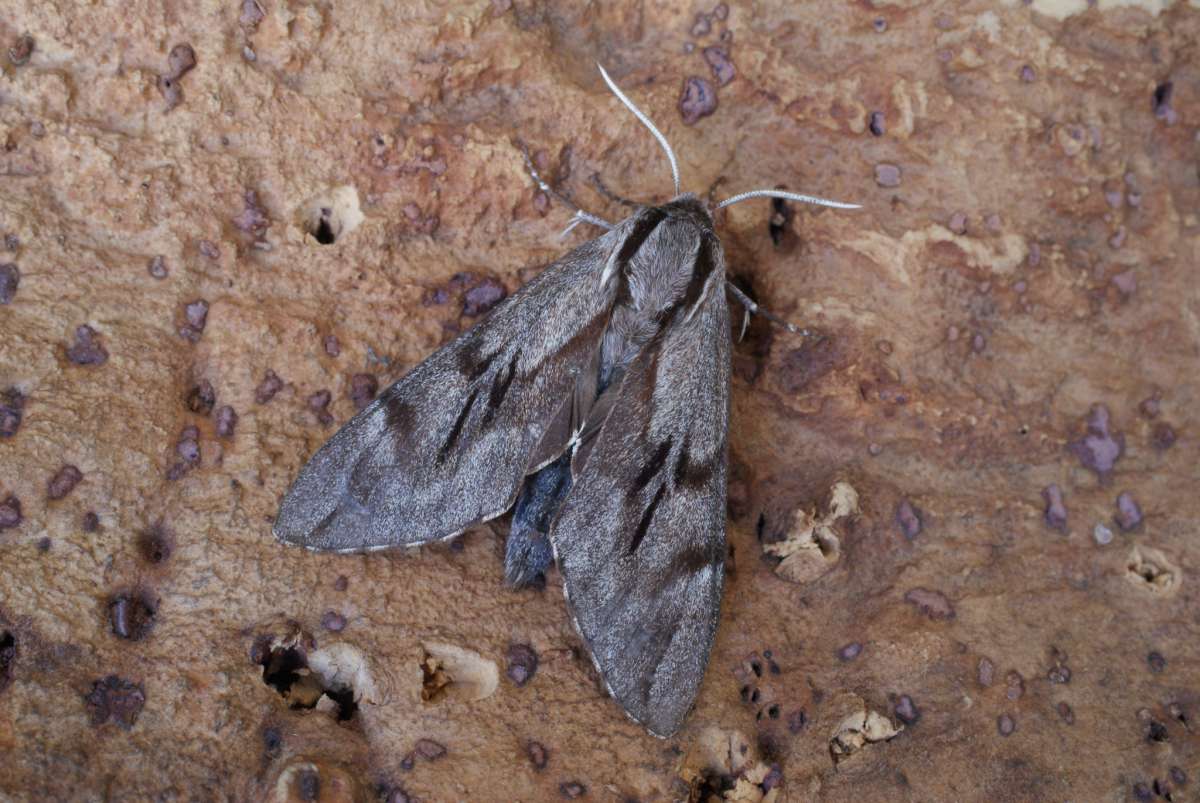Pine Hawk-moth

B&F 1978 RES 69.007
DistributionPhenologyReporting RatePhotos
Thinly distributed across Kent, this attractive moth is most likely to be encountered where the foodplant (Pines of course! - mostly Scots Pine, but not exclusively) is found. As with most Hawk-moths, it is fairly easy to ID, with black markings on the forewings and a black stripe either side of the head being diagnostic.
Grade 1 — adults are generally distinctive and unlikely to be confused with other species, but records outside documented range or flight period may require photos.
Distribution Map
The map below shows all records of Pine Hawk-moth (Sphinx pinastri) in the Kent database. If you've got a dot to add, please submit your records to us. Use the control below to filter by time span:
Phenology
The graph below shows at which time of the year Pine Hawk-moth (Sphinx pinastri) can be expected to be recorded in Kent. Use the controls below to filter by VC and time span:
Reporting Rate
The graph below shows how the number of records of Pine Hawk-moth (Sphinx pinastri) submitted each year has changed over time. Use the control below to filter by VC:
Photo Gallery
Below is a selection of Pine Hawk-moth (Sphinx pinastri) images from Kent. If you would like to contribute any photographs, please email mothsinkent@gmail.com. Click on a photo if you would like to see it larger.
External Links
For more information and images of Pine Hawk-moth (Sphinx pinastri), please take can be seen on the external pages listed below:
